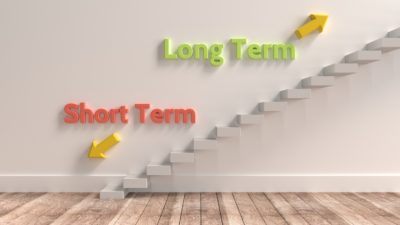One of Warren Buffett‘s famous investing sayings is “be fearful when others are greedy and greedy only when others are fearful” – or, in other words, sell when others are buying and buy when they’re selling.
But we might expect Foolish investors to know that, and looking at what Fools have been selling recently might well provide us with some ideas for investments that are past their prime
So, in this series of articles, we’re going to look at what customers of The Motley Fool ShareDealing Service have been selling in the past week or so, and what might have made them decide to do so.
Rollercoaster ride
The share price of Aviva (LSE: AV.) (NYSE: AV.US) has been on something of a rollercoaster ride this year, falling 23% between January and mid-April — thanks mainly to its dividend being slashed by 44% — only to climb back almost 20% by the end of last week. Over the longer term, the pitiful progress of Aviva’s share price makes painful reading for loyal investors. It’s 33% down on five years ago, and a whopping 70% down over the course of the last 15 years. Indeed, Aviva is regarded by some as a “value trap” — a seeming bargain that perennially fails to deliver what it appears to promise.
So, whilst its share price has enjoyed a notable turnaround recently, and is up some 26% on this time last year, perhaps it was the expectation that it’d soon be going back down again that prompted some investors to sell Aviva, putting the UK’s largest life and general insurance company into the number two spot in our latest “Top 10 Sells” list*.
Amongst the concerns that might have turned holders into sellers will have been whether the on-going streamlining and cost-cutting programme — started by former acting-CEO, and now chairman, John McFarlane, and continued by new CEO Mark Wilson — will really transform the business. Early signs are encouraging — and analysts are forecasting annualised earnings growth of 9% over the next couple of years — but there’s a long way to go yet, and Aviva’s exposure to the more seriously-troubled Eurozone economies inevitably remains a worry.
And then there’s the dividend. Despite being regarded as an income share — and it currently yields 4.4% — Aviva has cut its dividend three times in just over a decade: by 39% in 2002, by 27% in 2009, and then by 44% earlier this year. That’s not the sort of track record to inspire confidence, and its current dividend policy — “progressive … with reference to growth in cashflows and earnings” — is so vague as to be essentially meaningless.
A high-quality growth share
If you’re looking for a high-quality share with great potential, you’ll definitely want to know which company The Fool’s expert analysts have picked to feature in “The Motley Fool’s Top Growth Share For 2013“ report.
It’s completely free of charge, and there’s no further obligation, so get your copy delivered to your inbox now!
> Jon own shares in Aviva.
* based on aggregate data from The Motley Fool ShareDealing Service.






